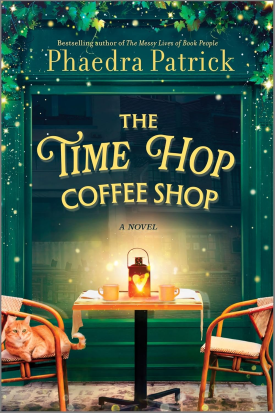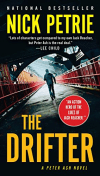Steven Johnson Books In Order
Book links take you to Amazon. As an Amazon Associate I earn money from qualifying purchases.Publication Order of Non-Fiction Books
| Interface Culture | (1997) | Description / Buy at Amazon |
| Mind Wide Open | (1999) | Description / Buy at Amazon |
| Emergence | (2001) | Description / Buy at Amazon |
| Everything Bad is Good for You | (2005) | Description / Buy at Amazon |
| The Ghost Map | (2006) | Description / Buy at Amazon |
| The Invention of Air | (2008) | Description / Buy at Amazon |
| Where Good Ideas Come From | (2010) | Description / Buy at Amazon |
| The Innovator's Cookbook | (2011) | Description / Buy at Amazon |
| Future Perfect | (2012) | Description / Buy at Amazon |
| How We Got to Now | (2014) | Description / Buy at Amazon |
| Wonderland | (2016) | Description / Buy at Amazon |
| Farsighted | (2018) | Description / Buy at Amazon |
| Enemy of All Mankind | (2020) | Description / Buy at Amazon |
| Extra Life | (2021) | Description / Buy at Amazon |
Steven Johnson is an award winning and best selling writer who writes works on the intersection of personal experience, technology and science.
His writings have significiantly influenced everything from the fight against terrorism in the 21st century, how political campaigns work in the modern age and cutting edge ideas in urban planning.
He was once named on the list of Top Ten Brains of the Digital Future by “Prospect Magazine.” He has also been the finalist of Best Business Book of 2010 at the 800CEORead Awards for the novel “Where Good Ideas Come From.” “The Economist” also named the novel one of the best books in the same year.
“The Ghost Map,” which is one of his most popular works, was on “Entertainment Weekly’s” list of ten best non fiction works of 2006. Over the years, his works have been translated into more than twelve languages.
Steven is also the co-creator of Plastic.com the Webby Award winning community site, FEED, a pioneering online magazine, and outside.in, the hyperlocal media site recently acquired by AOL. In addition to his writing, he is also a board member of several companies including Nerve, Betaworks and Meetup.com.
Johnson works at “Wired Magazine” as a contributing editor and in 2009, he worked at Columbia University’s The Journalism School as Hearst New Media’s Professional-in-Residence.
“How Twitter Will Change the Way We Live,” his blockbuster article that he wrote in “TIME,” was the winner of the Newhouse School Mirror Awards.
Steven has done the rounds in the writing world and written for a ton of prestigious magazines and publications across the United States. Among the publications he has written for include “The Nation,” “The Wall Street Journal” and “The New York Times” among several other periodicals.
He has made appearances on several award winning television programs. Some of the programs where he has been include Jim Lehrer’s “The NewsHour,” Jon Stewart’s “The Daily Show” and “The Charlie Rose Show” among many others.
Steven Johnson has also lectured on cultural, scientific and technological issues. He currently blogs on his blog at stevenberlinjohnson.com and is also very active on Twitter. He currently makes his home in Marin County in California.
Steven Johnson was brought up in Washington DC and went to St. Albans School. He would then go to Brown University for his undergraduate studies, where he was a student of semiotics, which was under the media and modern culture department.
He graduated with an English literature degree from Columbia University, before he went on to start a career as a writer. Johnson always wanted to become an author since he was fifteen and it would become something of an identity over the years.
However, the type of writer she wanted to be kept changing and in high school, she did a lot of writing from short stories, to poems. She would then go to college and graduate school, which is when he thought he should become an academic writer who sometimes found a popular audience.
In graduate school, he was mentored by Edward Said who would also become one of his main role models. In his twenties, he would get interested in technology and science, which was not something he had particularly been focused on before.
This is when he slowly began to settle on technology and science and became the ideas writer that he is today.
“The Ghost Map” by Steven Johnson is probably what made him be considered a dynamic thinker in the mold of Malcolm Gladwell, Dava Soble and James Gleick. The lead in the novel is Dr. John Snow, a real life historical hero.
The novel is set in 1854 during the summer, at a time when London is becoming recognized as one of the world’s first modern cities. However, it lacks the infrastructure needed including the sewers, clean water and garbage removal needed to support what is a rapidly expanding populace.
London has become the perfect breeding ground for a horrible disease whose cure is yet to be found. As the disease takes hold, a local curate and several physicians are spurred to action and over several weeks, they manage to solve what had been one most puzzling medical riddles of their times.
The work delves into multidisciplinary thinking as Johnson explores the interconnectedness of history and the spread of contagion, spread of disease, the nature of scientific inquiry, the rise of cities. In doing this, he offers a powerful explanation of history and how it shaped how it shaped the modern world.
Steven Johnson’s novel “Where Good Ideas Come From” is a work where the author argues that most people have it so wrong about the source of innovative ideas. Most people believe that ideas come from a lone scientist working all alone in the lab who suddenly stumbles on an idea.
It is something akin to Darwin developing his theory of the survival of the fittest while reading the many theories of Mathus or Isaac Newton being hit on the head by a falling apple.
In the work, he asserts that the most innovative ideas usually come to the scientists or originators from plowing through slow hunches that may take months, years or even decades to come together.
By looking at real life examples, Johnson says that big cities tend to have more innovation as compared to small towns given that they have more spillover of ideas, more diversity and a chance to share ideas.
Ideas never develop fully formed but often coalesce slowly as the inverter or scientist keeps them on the back burner, even as he works on other interests. Then he perhaps has a slow hunch when he meets another person and together, they complete each other’s ideas.
Johnson explores things that tend to foster innovation that include taking ideas from other domains and making a ton of mistakes before the big breakthrough.
“How We Got to Now,” by Steven Johnson is an illustrated history in which the author explores how innovation has evolved over the centuries. He traces aspects of modern life from eyeglass lenses to clocks and refrigeration. From their creation by entrepreneurs, amateurs and hobbyists.
It is full of surprising stories of brilliant mistakes and accidental genius. From the French publisher who beat Edison in inventing the phonograph that failed to include payback, to the movie star in Hollywood who invented Bluetooth and Wi-Fi technology.
The work explores history in the trademark Johnson style as he examines the unexpected interconnectedness between what would be considered unrelated fields. For instance, he looks into how air conditioning allowed people to live in formerly uninhabitable places such as Phoenix or Dubai.
He looks into how innovations in clean water technologies made the manufacture of computer chips possible. It is an engaging, informative and provocative story, which has earned the author thousands of readers across the world.
Book Series In Order » Authors »


 Any issues with the book list you are seeing? Or is there an author or series we don’t have? Let me know!
Any issues with the book list you are seeing? Or is there an author or series we don’t have? Let me know!